This page contains the detailed and easy notes for GCSE OCR Biology Organisation in ecosystems for revision and understanding Organisation in ecosystems .
GCSE OCR BIOLOGY ORGANISATION IN ECOSYSTEMS COMPLETE REVISION SUMMARY
ORGANISATION IN ECOSYSTEMS
Organisation in ecosystems
Abiotic factors affecting the abundance and distribution of organisms
Biotic factors affecting organisms in ecosystems
Abiotic factors (data)
Biotic factors (data)
Competition in a community
Interdependence within a community
Trophic levels
Pyramids of biomass
Transfer of biomass
Ecosystem –
Groups of communities with its living and non-living factors
- Biosphere – Groups of different Ecosystem
- Organisms, Populations, and Communities: In a forest, each pine tree is an organism. Together, all the pine trees make up a population. All the plant and animal species in the forest comprise a community.

- Ecosystems: This coastal ecosystem in the southeastern United States includes living organisms and the environment in which they live.

- The Biosphere: Encompasses all the ecosystems on Earth.

Banner 4
ECOSYSTEM
It is a segment of nature consisting of a biological community and its physical environment both interacting and exchanging materials as well as energy. e.g – pond ecosystem.
Ecosystem is the group of communities interacting with the biotic and the abiotic factors.
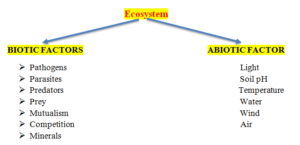
Banner 3
ABIOTIC FACTORS
Non-living substances and factors of an ecosystem. E.g temperature, light, wind.
Most of the abiotic factors affects photosynthesis which affects the producers which inturn affect the complete food chain.
Light – Less light limits the photosynthesis and affect the entire food chain Plant in low light have broader leaves to increase surface area for absorption.
Water – Water is required for growth. Less water limits the photosynthesis and affect the entire food chain
pH – The low pH makes the soil acidic and limits the growth of plants and affect the entire food chain
Temperature – Temperature also limits the rate of photosynthesis which affects the food chain
Oxygen – The oxygen is required for the growth of the plant. In low levels of oxygen the organisms cannot survive
Carbon Dioxide – Carbon dioxide is required for growth. Less water limits the photosynthesis and affect the entire food chain.
Wind – Plants growing in high wind adapt different shapes. Wind also affects the rate of transpiration.
BIOTIC FACTORS
Constitute all the living members of an ecosystem. E.g Producers, Consumers, Decomposers.
FOOD – Food availability helps the species to grow and reproduce.
PATHOGEN – A pathogen can cause infectious disease d affect the growth of the population and can also wipe the whole population
PARASITES – Parasites can limit the growth of the host and affect the • population of the community.
COMPETITION – Increasing competition can affect the growth of the population and can outcome the individual of a population
PREDATORS – Increase in predation can decrease the population of the prey.
INTERDEPENDENCE
- One species is dependent on other. Like plants are dependent on insects for seed dispersal and pollination.
- Herbivores are dependent on plants for food.
- If one species is removed it affect the other species.
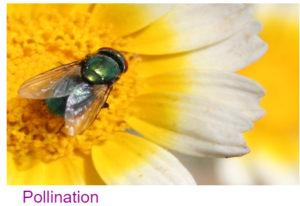
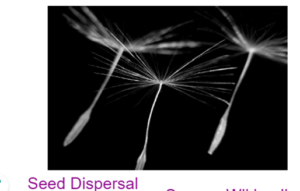
COMPETITION IN PLANTS AND ANIMALS
| INTERSPECIFIC COMPETION | INTRASPECIFIFC COMPETION |
| It is the competition between the members of different species. | It is the competition between the members of the same species. |
Food Territory Resources | Food Territory Mating |
| It leads to the movement of species to a new place, adaptation or extinction |
Banner 4
Organisation in ecosystems
[download_after_email id=”9166″]
ADAPTATIONS
Special Features that give the organisms the survival advantage and helps the organism to survive in the extreme conditions.
PLANT REQUIRMENTS
- Water, space, minerals, carbon dioxide for photosynthesis
- Oxygen for respiration.
- Major adaptations they have make them successful in getting these components from the environment
ANIMAL REQUIREMENTS
- Food to survive
- Oxygen for respiration
- Mate to reproduce.
Adaptations can be structural, behavioural and functional adaptations.
PLANT ADAPTIONS
| PLANT CHALLENGES | PLANT ADAPTATIONS | EXAMPLE |
| Water loss and dry conditions in desert | Small leaves; Leaves reduced to spines to decreases the surface area for water less. Extensive root system to absorb maximum water and succulent stems to store water. Plants are also covered with waxy cuticle to limit water loss | Cactus where leaves are reduced to spines Marram grass which has curled leaves and sunken stomata to trap moist air to limit water loss. |
| Lots of rain and water with less light in rainforest | Leaves are broad to trap maximum sunlight. They have thin cuticle | Epiphytes like Lianas |
| Plant growing in low nitrogen soils. | The plants trap insect and digest them to fulfil their nitrogen and mineral requirements | Carnivores plant like Venus Flytrap |
| Plants prone to insect attack | These plants secrete chemicals like alkaloids or tannins to repel insect | Tobacco produced Nicotine. |
| Aquatic Plants growing in excess water and less light | Flexible stem to withstand water current. Broad leaves to absorb maximum light. They have hair spaces in leaves | Water Lillies |
ANIMAL ADAPTATIONS
| DESERT ANIMALS Hot, dry conditions | ARCTIC ANIMALS Extreme cold | |
| Structural | They have large ears to give off maximum heat. They are small with large surface area to volume ratio. | They have small surface area to volume ratio to prevent heat loss. They have fur or thick fat deposit to provide insulation. White fur also comouflage with the ice. |
| Behavioural | They are more active during early morning and evening. When it is too hot or too cold they rest in burrows. | Polar bears form big dens and are strong swimmers and can swim through ice. |
| Functional | Produce very concentrated or no urine. | The fur or the coat change colours in summer and winters. |
EXTREMOPHILES
| EXTREME TEMPERATURE | EXTREME SALT |
| They have enzymes that work at high temperature and do not get denatured. | They have salt glands to expel excess salt. |
| For extreme cold they have antifreeze. | They also have adaptations in the cytoplasm so that they cannot gain or loose water. |
STUDYING COMMUNITIES
Quadrat Method – Random squares are placed at different point and the species within that squares are counted.
Transect Method – A line is placed and the species that are within this line or few cm above or below this line are counted and recorded.
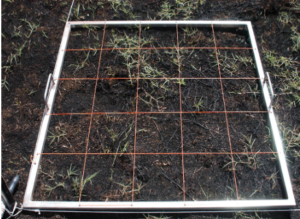
Sample Size – The sample to be take for observation.
Mean – It is the statistical value calculate by adding all the values divided by total number of values.
Median – It is the middle value of the data.
Mode – The value that has the greatest frequency.
Range: It is the highest value take away the lowest value.
TROPHIC LEVELS
Producers: They produce their own food as they can photosynthesize and converts Sun’s energy to chemical energy.
Primary Consumers – They are herbivores which feeds on plants.
Secondary Consumers – They are carnivores or omnivores which feeds on herbivores.
Tertiary Consumers – They are at the top of food chain
Decomposers – Feed on dead and decay matter.
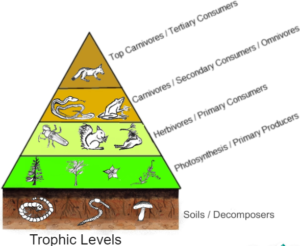
Baneer 6
FOOD CHAINS
- It is the relationship of who eats whom.
- At each level there is a loss of energy and only 10% is transferred to the next trophic level so the food chains are mostly restricted to 3-4 tropic levels.
- Sun is the principal source of energy driving the whole food chain.
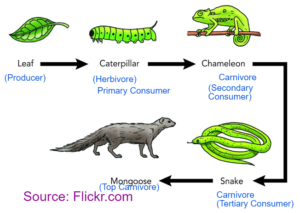
PREDATOR- PREY RELATIONSHIP
- Prey increases
- Predator increases
- Prey Decreases
- Predator decreases
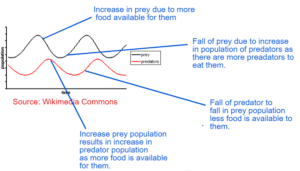
PYRAMIDS OF BIOMASS
- Graphical representation of the mass of the living organism at each level.
- It is upright as :-
- Not all the biomass is eaten by the next trophic level
- Some of the biomass is lost as energy at each trophic level.
- Some of the biomass is lost as waste product at the trophic level.
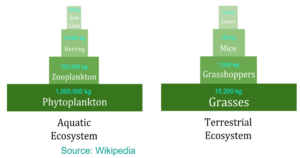
Biomass is the mass of the materials contained in the living organisms.
PYRAMIDS OF NUMBERS
- It is the graphical representation of the number of organisms at each trophic level.
- It can be upright, inverted or upside down.
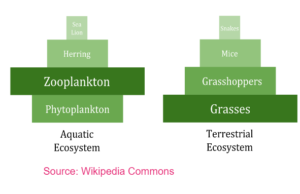
ENERGY TRANSFER PYRAMID
- It is the graphical representation of energy at each trophic level.
- Energy Lost at Each trophic Levels
- a) Energy is required for movement, growth and repair
- b) Energy is lost in digestion
- c) Energy is lost in maintaining constant body temperature
- d) Energy is lost as heat during respiration.
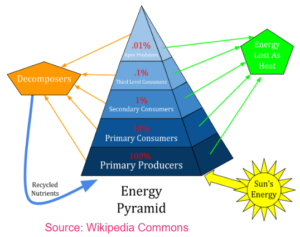
CYCLING OF MATERIALS
- Decomposers play an important role in material recycling
- Decomposers feeds on dead and decay matter. They break the organic matter into simple components and return them to soil.
- The products carbon dioxide into the atmosphere by the process of decomposition.
- Bacteria and Fungi
Proteins in the dead and decay matter is converted into nitrates and returned to soil.
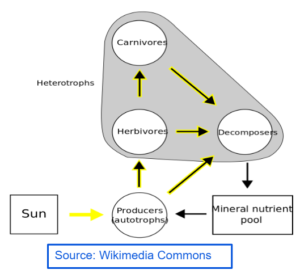
Disclaimer:
I have tried my level best to cover the maximum of your specification. But this is not the alternative to the textbook. You should cover the specification or the textbook thoroughly. This is the quick revision to help you cover the gist of everything. In case you spot any errors then do let us know and we will rectify it.
References:
BBC Bitesize
Wikipedia
Wikimedia Commons
Image Source:
Wikipedia
Wikimedia
Commons
Flickr
Pixabay
Make sure you have watched the above videos and are familiar with the key definations before trying these questions. It is also good to time yourself while doing these questions so that you can work on the speed as well
Adaption Interdependence And Competition
Organising An Ecosystem
- Organisation of an Ecosystem 1 MS
- Organisation of an Ecosystem 1 QP
- Organisation of an Ecosystem 2 MS
- Organisation of an Ecosystem 2 QP
- Organisation of an Ecosystem 3 MS
- Organisation of an Ecosystem 3 QP
Biodiversity and the Ecosystem
- Biodiversity & Effect of Humans on Ecosystems 1 MS
- Biodiversity & Effect of Humans on Ecosystems 1 QP
- Biodiversity & Effect of Humans on Ecosystems 2 MS
- Biodiversity & Effect of Humans on Ecosystems 2 QP
- Biodiversity & Effect of Humans on Ecosystems 3 MS
- Biodiversity & Effect of Humans on Ecosystems 3 QP
- Food Production 1 MS
- Food Production 1 QP
- Food Production 2 MS
- Food Production 2 QP
- Food Production 3 MS
- Food Production 3 QP
- Trophic Levels in an Ecosystem 1 MS
- Trophic Levels in an Ecosystem 1 QP
- Trophic Levels in an Ecosystem 2 MS
- Trophic Levels in an Ecosystem 2 QP
- Trophic Levels in an Ecosystem 3 MS
- Trophic Levels in an Ecosystem 3 Q
